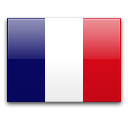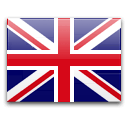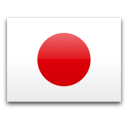Ibrahim Mahama: Half of a Yellow Sun
Half of a Yellow Sun is a solo exhibition by the Ghanaian author and an artist of monumental installations Ibrahim Mahama, which features a selection of new fabric paintings that explore the history of materials, commerce, and cultural identity.
The collage material in these works was partly collected by the artist over the years, through a process of exchanging new fabrics from merchants (mostly women) working in markets across Ghana. Known as "Dutch Wax" cloths, these densely patterned, brightly colored cotton fabrics were originally manufactured and traded by Dutch companies operating along the West African coastline in the 19th century. Fabrics developed for export to the Dutch East Indies colonies, incorporating traditional Indonesian batik designs, were mass-produced at a cheaper cost than authentic batik fabrics; however, these products were shunned by customers in Southeast Asia, which led Dutch sellers to seek alternative markets. Dutch merchant ships docking for refueling in West African port cities such as Accra found a market for imitation batik, which was quickly modified to include African-inspired designs. Dutch wax cloth eventually became synonymous with African design and culture, often as a means of non-verbal communication in everyday wear, or as a sign of wealth, power or influence in formal occasions.
The development of this collection is intertwined with the development of his most famous jute sack work. As an art student, he began building an extensive archive of materials by collecting discarded fabrics from various markets in Ghana. In the case of jute, these ultimately formed the basis for large-scale architectural interventions. The current series, which uses wax print samples, incorporated into some of his earlier works, including Kwaku Minoona (2019) and Chale Wote (2014), is the culmination of an approach in which multiple remnants are juxtaposed and overlapped to produce a unique single piece. In some sections, the colorful stitching between sections looks like lettering or graffiti on the surface, while in others the pattern extends beyond the confines of the canvas frame. He was initially trained as a painter, and the decisions he made in these works included choosing fabrics based on pattern and color – which he saw as akin to using paint on canvas.
・・・
#HalfOfAYellowSun
#IbrahimMahama
The collage material in these works was partly collected by the artist over the years, through a process of exchanging new fabrics from merchants (mostly women) working in markets across Ghana. Known as "Dutch Wax" cloths, these densely patterned, brightly colored cotton fabrics were originally manufactured and traded by Dutch companies operating along the West African coastline in the 19th century. Fabrics developed for export to the Dutch East Indies colonies, incorporating traditional Indonesian batik designs, were mass-produced at a cheaper cost than authentic batik fabrics; however, these products were shunned by customers in Southeast Asia, which led Dutch sellers to seek alternative markets. Dutch merchant ships docking for refueling in West African port cities such as Accra found a market for imitation batik, which was quickly modified to include African-inspired designs. Dutch wax cloth eventually became synonymous with African design and culture, often as a means of non-verbal communication in everyday wear, or as a sign of wealth, power or influence in formal occasions.
The development of this collection is intertwined with the development of his most famous jute sack work. As an art student, he began building an extensive archive of materials by collecting discarded fabrics from various markets in Ghana. In the case of jute, these ultimately formed the basis for large-scale architectural interventions. The current series, which uses wax print samples, incorporated into some of his earlier works, including Kwaku Minoona (2019) and Chale Wote (2014), is the culmination of an approach in which multiple remnants are juxtaposed and overlapped to produce a unique single piece. In some sections, the colorful stitching between sections looks like lettering or graffiti on the surface, while in others the pattern extends beyond the confines of the canvas frame. He was initially trained as a painter, and the decisions he made in these works included choosing fabrics based on pattern and color – which he saw as akin to using paint on canvas.
・・・
#HalfOfAYellowSun
#IbrahimMahama






